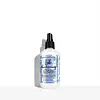What's inside
What's inside
 Key Ingredients
Key Ingredients

No key ingredients
 Benefits
Benefits

 Concerns
Concerns

No concerns
 Ingredients Side-by-side
Ingredients Side-by-side

Water
Skin ConditioningPropanediol
SolventHydrolyzed Corn Starch
HumectantEmblica Officinalis Fruit Extract
Skin ConditioningBiotinoyl Tripeptide-1
Acacia Senegal Gum
MaskingCorn Starch Modified
AbsorbentWheat Amino Acids
Skin ConditioningHydrolyzed Wheat Protein
Skin ConditioningHydrolyzed Wheat Starch
Skin ConditioningDimethicone PEG-8 Meadowfoamate
EmollientDimethicone
EmollientDimethiconol
EmollientGlycerin
HumectantStearamidopropyl Dimethylamine
EmulsifyingPEG-40 Hydrogenated Castor Oil
EmulsifyingHydrogenated Lecithin
EmulsifyingCoco-Glucoside
CleansingCetearyl Alcohol
EmollientPolyquaternium-4
Polyquaternium-10
Panthenol
Skin ConditioningPvp
Emulsion StabilisingSodium Chloride
MaskingCitric Acid
BufferingSodium Acetate
BufferingIsopropyl Alcohol
SolventParfum
MaskingHexyl Cinnamal
PerfumingLinalool
PerfumingCitronellol
PerfumingCitral
PerfumingLimonene
PerfumingBenzyl Benzoate
AntimicrobialHydroxycitronellal
PerfumingPotassium Sorbate
PreservativePhenoxyethanol
PreservativeWater, Propanediol, Hydrolyzed Corn Starch, Emblica Officinalis Fruit Extract, Biotinoyl Tripeptide-1, Acacia Senegal Gum, Corn Starch Modified, Wheat Amino Acids, Hydrolyzed Wheat Protein, Hydrolyzed Wheat Starch, Dimethicone PEG-8 Meadowfoamate, Dimethicone, Dimethiconol, Glycerin, Stearamidopropyl Dimethylamine, PEG-40 Hydrogenated Castor Oil, Hydrogenated Lecithin, Coco-Glucoside, Cetearyl Alcohol, Polyquaternium-4, Polyquaternium-10, Panthenol, Pvp, Sodium Chloride, Citric Acid, Sodium Acetate, Isopropyl Alcohol, Parfum, Hexyl Cinnamal, Linalool, Citronellol, Citral, Limonene, Benzyl Benzoate, Hydroxycitronellal, Potassium Sorbate, Phenoxyethanol
Ingredients Explained
These ingredients are found in both products.
Ingredients higher up in an ingredient list are typically present in a larger amount.
Citric Acid is an alpha hydroxy acid (AHA) naturally found in citrus fruits like oranges, lemons, and limes.
Like other AHAs, citric acid can exfoliate skin by breaking down the bonds that hold dead skin cells together. This helps reveal smoother and brighter skin underneath.
However, this exfoliating effect only happens at high concentrations (20%) which can be hard to find in cosmetic products.
Due to this, citric acid is usually included in small amounts as a pH adjuster. This helps keep products slightly more acidic and compatible with skin's natural pH.
In skincare formulas, citric acid can:
While it can provide some skin benefits, research shows lactic acid and glycolic acid are generally more effective and less irritating exfoliants.
Most citric acid used in skincare today is made by fermenting sugars (usually from molasses). This synthetic version is identical to the natural citrus form but easier to stabilize and use in formulations.
Read more about some other popular AHA's here:
Learn more about Citric AcidPhenoxyethanol is a preservative that has germicide, antimicrobial, and aromatic properties. Studies show that phenoxyethanol can prevent microbial growth. By itself, it has a scent that is similar to that of a rose.
It's often used in formulations along with Caprylyl Glycol to preserve the shelf life of products.
Water. It's the most common cosmetic ingredient of all. You'll usually see it at the top of ingredient lists, meaning that it makes up the largest part of the product.
So why is it so popular? Water most often acts as a solvent - this means that it helps dissolve other ingredients into the formulation.
You'll also recognize water as that liquid we all need to stay alive. If you see this, drink a glass of water. Stay hydrated!
Learn more about Water